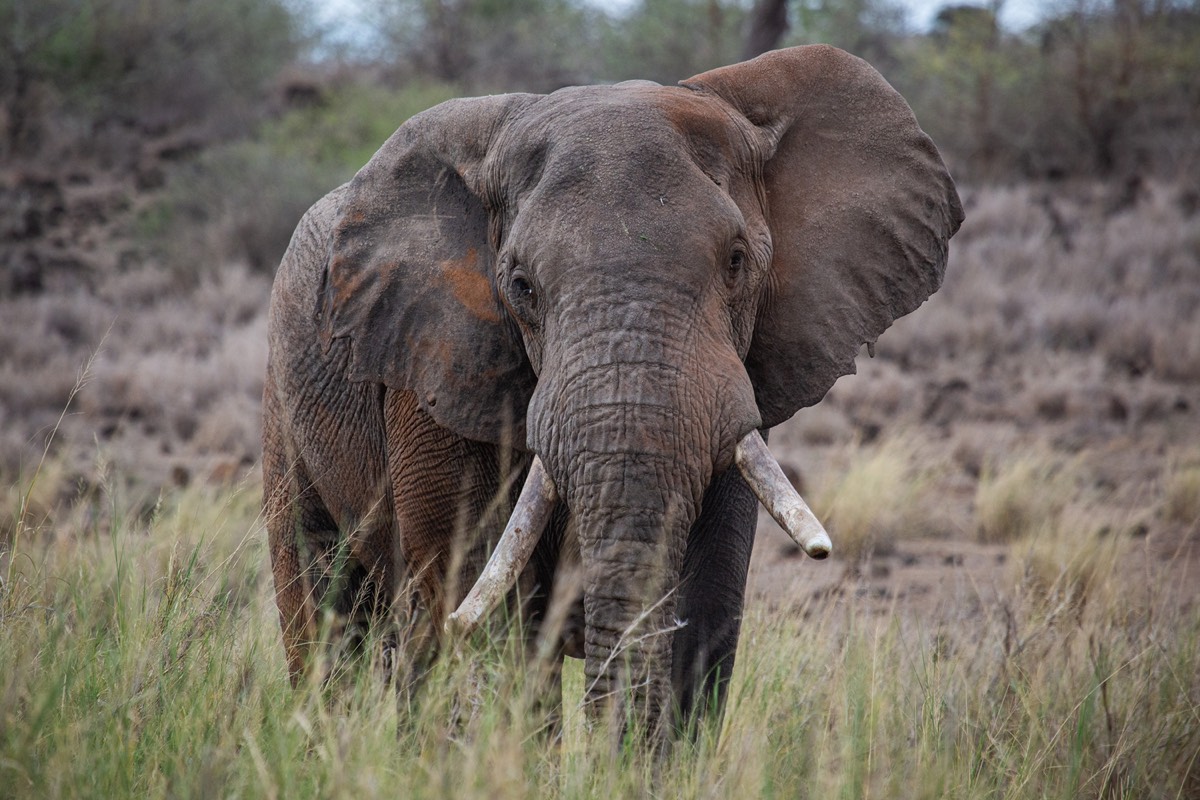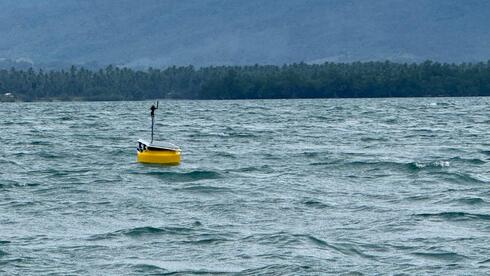Scientists hail third manta ray species “evolution in action” – Oceanographic Magazine

Report on the Formal Identification of *Mobula yarae* and its Implications for Sustainable Development Goal 14
Executive Summary
A new species of manta ray, the Atlantic manta ray (*Mobula yarae*), has been formally identified, a development with significant implications for marine conservation and the achievement of Sustainable Development Goal 14: Life Below Water. The discovery underscores the urgent need for targeted conservation strategies to protect marine biodiversity from anthropogenic threats such as unsustainable fishing practices and coastal development. This report details the scientific findings, identifies key threats in the context of the SDGs, and outlines a strategic path forward for research and protection.
1.0 Species Identification and Scientific Context
The formal description of *Mobula yarae* was facilitated by the recovery of an intact specimen in 2017. This event provided the essential morphological and genetic data required for official classification.
- Type Specimen: A juvenile specimen found off Pompano Beach, Florida, served as the holotype for the species description.
- Evolutionary Significance: Genetic evidence suggests *M. yarae* recently diverged from other manta ray species, offering a rare opportunity to study speciation in a recently evolved lineage. This contributes valuable scientific knowledge, a cornerstone for implementing science-based management plans as advocated by SDG 14.
2.0 Threats and Alignment with SDG 14 Targets
The Atlantic manta ray’s restricted coastal habitat in the western Atlantic Ocean renders it highly vulnerable to human activities. These threats directly challenge the progress of several targets within SDG 14.
- Unsustainable Fishing Practices (SDG 14.4): The species is frequently caught as bycatch in various fishing operations.
- Gillnets and trawls are significant sources of mortality throughout its range.
- Shrimp trawling in the Gulf of Mexico is identified as a major threat.
- These incidents highlight a failure to effectively regulate harvesting and end destructive fishing practices that harm non-target species.
- Marine Pollution and Debris (SDG 14.1): Direct interaction with human-made hazards is a documented threat.
- Fishing line entanglement is a significant risk in Florida waters.
- Boat strikes are common in areas with heavy vessel traffic.
- Coastal Ecosystem Degradation (SDG 14.2): The species’ proximity to shore exposes it to the impacts of coastal development, which can degrade the critical habitats necessary for its survival. Protecting these marine and coastal ecosystems is essential for achieving SDG 14.2.
3.0 Conservation Imperatives and Strategic Recommendations
The formal recognition of *Mobula yarae* is a critical first step, enabling the development of tailored conservation initiatives that support global sustainability commitments.
3.1 The Role of Formal Identification
Official classification is fundamental to conservation. It allows for the species to be recognized in national and international legal frameworks, facilitating targeted protection efforts. As stated by researcher Jessica Pate, “You can’t protect what you haven’t formally identified.” This aligns with SDG Target 14.c, which seeks to enhance the conservation and sustainable use of oceans through legal frameworks.
3.2 Future Research and Conservation Priorities
A strategic research agenda is required to inform effective management and policy, directly contributing to the scientific understanding needed to achieve SDG 14.
- Population Assessment: Determine the population size and structure across the species’ range.
- Movement and Habitat Use: Utilize satellite telemetry to understand movement patterns and identify critical habitats, particularly in areas of high boat traffic and coastal development.
- Threat Assessment: Quantify the impact of bycatch, vessel strikes, and habitat degradation in key areas.
- Partnerships for the Goals (SDG 17): The collaboration demonstrated by the Marine Megafauna Foundation’s Florida Manta Project exemplifies the partnerships necessary to advance scientific research and achieve conservation outcomes.
1. Which SDGs are addressed or connected to the issues highlighted in the article?
The article primarily addresses issues related to Sustainable Development Goal 14, which focuses on the conservation and sustainable use of marine resources. The discovery and subsequent need for protection of the new manta ray species, Mobula yarae, directly links to the health of marine ecosystems and the protection of marine biodiversity.
-
SDG 14: Life Below Water
This is the most relevant SDG. The article’s entire focus is on a marine species, the threats it faces from human activities (bycatch, boat strikes, coastal development), and the scientific and conservation efforts required for its protection. The formal identification of Mobula yarae is presented as a critical step for its conservation, which is the core objective of SDG 14.
2. What specific targets under those SDGs can be identified based on the article’s content?
Based on the article’s discussion of marine conservation, scientific research, and threats from human activities, several targets under SDG 14 can be identified.
-
Target 14.2: Sustainably manage and protect marine and coastal ecosystems.
The article highlights that the Atlantic manta ray’s coastal presence “makes the…species potentially more vulnerable to human impacts.” It specifically mentions threats within its habitat, such as “heavy boat traffic and coastal development” in Florida. The call to understand the species’ “habitat needs and movement patterns” is a direct effort towards managing and protecting its coastal ecosystem to avoid adverse impacts.
-
Target 14.4: End overfishing, illegal, unreported and unregulated fishing and destructive fishing practices.
The text explicitly states that the “manta ray species is caught as bycatch in gillnets, trawls, and other fishing gear throughout its range.” It also identifies shrimp trawling in the Gulf of Mexico as “a major source of mortality.” These points directly relate to the need to regulate destructive fishing practices to protect non-target species like the manta ray.
-
Target 14.5: Conserve at least 10 per cent of coastal and marine areas…based on the best available scientific information.
The article emphasizes that the formal species description provides the “best available scientific information” necessary for conservation. Jessica Pate states, “You can’t protect what you haven’t formally identified.” This scientific identification is the foundational step required to design and implement effective conservation areas for the species.
-
Target 14.a: Increase scientific knowledge, develop research capacity and transfer marine technology.
The entire article is a testament to this target. It details the scientific process of identifying a new species using “detailed morphological measurements and genetic samples.” It also outlines “future research priorities,” including population assessment, satellite telemetry studies, and habitat characterization, all of which contribute to increasing scientific knowledge to improve ocean health.
3. Are there any indicators mentioned or implied in the article that can be used to measure progress towards the identified targets?
The article implies several qualitative and quantitative indicators that can be used to track progress towards the identified targets, even if they are not official SDG indicators.
-
Indicators for Target 14.2 (Protecting Ecosystems):
- Incidence of human-wildlife conflict: The article mentions “boat strikes and fishing line entanglement as significant threats.” A reduction in the documented number of these incidents would indicate progress.
- Habitat characterization and protection status: Progress can be measured by the completion of studies on “habitat needs and movement patterns” and the subsequent designation of protected zones in areas with “heavy boat traffic and coastal development.”
-
Indicators for Target 14.4 (Sustainable Fishing):
- Bycatch rates: The article identifies bycatch in “gillnets, trawls, and other fishing gear” as a major threat. A key indicator would be the measured reduction of Mobula yarae bycatch in these fisheries, particularly in the Gulf of Mexico shrimp trawling industry.
-
Indicators for Target 14.5 (Conserving Marine Areas):
- Formal species recognition: The article presents the “formal recognition of Mobula yarae” as a crucial first step. This has been achieved and serves as a baseline indicator.
- Establishment of conservation areas: Future progress could be measured by the percentage of the species’ key habitat that is brought under a formal conservation or protection status.
-
Indicators for Target 14.a (Scientific Knowledge):
- Completion of scientific milestones: The article notes the successful collection of a “type specimen” and the completion of the “formal species description” as key achievements.
- Implementation of research programs: Progress can be measured by the initiation and completion of the “future research priorities” listed, such as “population assessment,” “movement pattern studies using satellite telemetry,” and “threat assessment in key areas.”
4. Table of SDGs, Targets, and Indicators
| SDGs | Targets | Indicators Identified or Implied in the Article |
|---|---|---|
| SDG 14: Life Below Water | 14.2: Sustainably manage and protect marine and coastal ecosystems. |
|
| SDG 14: Life Below Water | 14.4: End overfishing and destructive fishing practices. |
|
| SDG 14: Life Below Water | 14.5: Conserve coastal and marine areas based on the best available scientific information. |
|
| SDG 14: Life Below Water | 14.a: Increase scientific knowledge and research capacity. |
|
Source: oceanographicmagazine.com

What is Your Reaction?
 Like
0
Like
0
 Dislike
0
Dislike
0
 Love
0
Love
0
 Funny
0
Funny
0
 Angry
0
Angry
0
 Sad
0
Sad
0
 Wow
0
Wow
0








































































